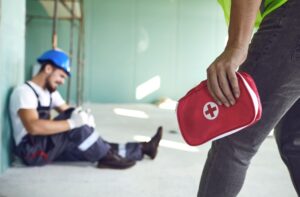Fire risk assessments are vital for ensuring the safety of people in any building. They help identify areas where fires could start and measures needed to prevent them. Knowing how often to conduct these assessments is crucial to maintaining a safe environment and staying compliant with fire safety laws.
Understanding the regulations and best practices for fire risk assessments will help you keep everyone in the building safe.
Legal Requirements for Fire Risk Assessments
In the UK, fire risk assessments are a legal requirement under the Regulatory Reform (Fire Safety) Order 2005. This law applies to all non-domestic properties, including businesses, public buildings, and multi-occupancy residences. The primary goal of this legislation is to ensure that appropriate fire safety measures are in place to protect everyone in the building.
Business owners, landlords, and employers must conduct regular fire risk assessments to identify possible dangers and implement measures to reduce these risks. Failure to comply can result in severe penalties, including hefty fines or even imprisonment. Therefore, staying updated on legal requirements is critical for maintaining compliance.
The assessment must be recorded, especially in workplaces with five or more employees. This record should detail identified hazards, at-risk individuals, preventive measures taken, and the emergency procedures in place. Regular reviews of the assessment are also mandated, particularly when there are significant changes in the building structure, its use, or occupancy levels.
Factors That Influence Frequency
The frequency of fire risk assessments can vary based on several factors. Understanding these factors helps ensure that assessments are carried out often enough to maintain safety and compliance.
1. Type of Building: Different buildings have different risk levels. A small office might not require assessments as often as a large warehouse or industrial facility.
2. Building Use: How the building is used plays a significant role in determining assessment frequency. High-risk areas, such as kitchens, laboratories, or manufacturing sites, need more frequent reviews.
3. Changes to the Building: Any structural changes or modifications in the building, such as new installations or layout changes, should prompt a reassessment to account for new fire risks.
4. Occupancy Levels: Buildings with high turnover in occupancy, like hotels or theatres, require more frequent assessments to ensure that safety measures are adequate for the number of people present.
5. Fire Safety Incidents: Any recent fire incidents, even minor ones, should lead to an immediate reassessment. It helps identify causes and prevent future occurrences.
6. Regulatory Updates: Changes in fire safety regulations or standards should prompt a review to ensure ongoing compliance.
Best Practices for Scheduling Fire Risk Assessments
Scheduling fire risk assessments is essential for maintaining a safe environment. Implementing best practices ensures your assessments are thorough and timely.
1. Set Routine Intervals: Establish regular intervals for conducting assessments, such as annually or bi-annually. This creates consistency and ensures risks are continually identified and mitigated.
2. Use a Calendar System: Utilise digital calendar alerts to remind you of upcoming assessments. This helps keep track of deadlines and maintain a regular schedule.
3. Review After Changes: Always reassess fire risks following any significant changes to the building, like renovations or new equipment installations. This ensures that the safety measures are still adequate.
4. Train Staff: Regularly train staff on fire safety practices and what to look for in potential hazards. Having multiple sets of eyes can increase the likelihood of identifying risks early.
5. Document Everything: Keep detailed records of each assessment, including identified hazards and actions taken to mitigate risks. This documentation is essential for demonstrating compliance and tracking improvements over time.
FAQs About Fire Risk Assessments
Having questions about fire risk assessments is common. Here are some frequently asked questions to help clarify important points:
1. How Often Should I Review My Fire Risk Assessment?
Review your fire risk assessment at least once a year or whenever there are significant changes to the building or its use.
2. Who Should Conduct the Fire Risk Assessment?
A competent person with knowledge of fire safety principles should conduct the assessment. This could be someone with proper training or a professional fire risk assessor.
3. What Should Be Included in a Fire Risk Assessment?
The assessment should include identification of fire hazards, evaluation of risks, documentation of findings, and implementation of preventive measures. It should also outline emergency procedures.
4. What Are the Penalties for Non-Compliance?
Failure to comply with fire safety regulations can result in severe penalties, including fines and imprisonment. Non-compliance puts lives at risk and can have legal and financial consequences.
5. Is It Necessary to Keep Records of the Assessment?
Yes, especially if you employ five or more people. Keeping records helps ensure transparency and provides proof of compliance during inspections.
Conclusion
Regular fire risk assessments are vital for the safety and compliance of any building. Adhering to legal requirements and considering factors like building type and use help determine the appropriate frequency of assessments. By regularly updating and documenting your assessments, you contribute to a safer environment and ensure compliance with fire safety laws.
For expert guidance and comprehensive fire safety training, look no further than CR Training. Our team of professionals can help you maintain compliance and enhance the safety of your building. Contact us today to learn more about our services and how we can assist you!




